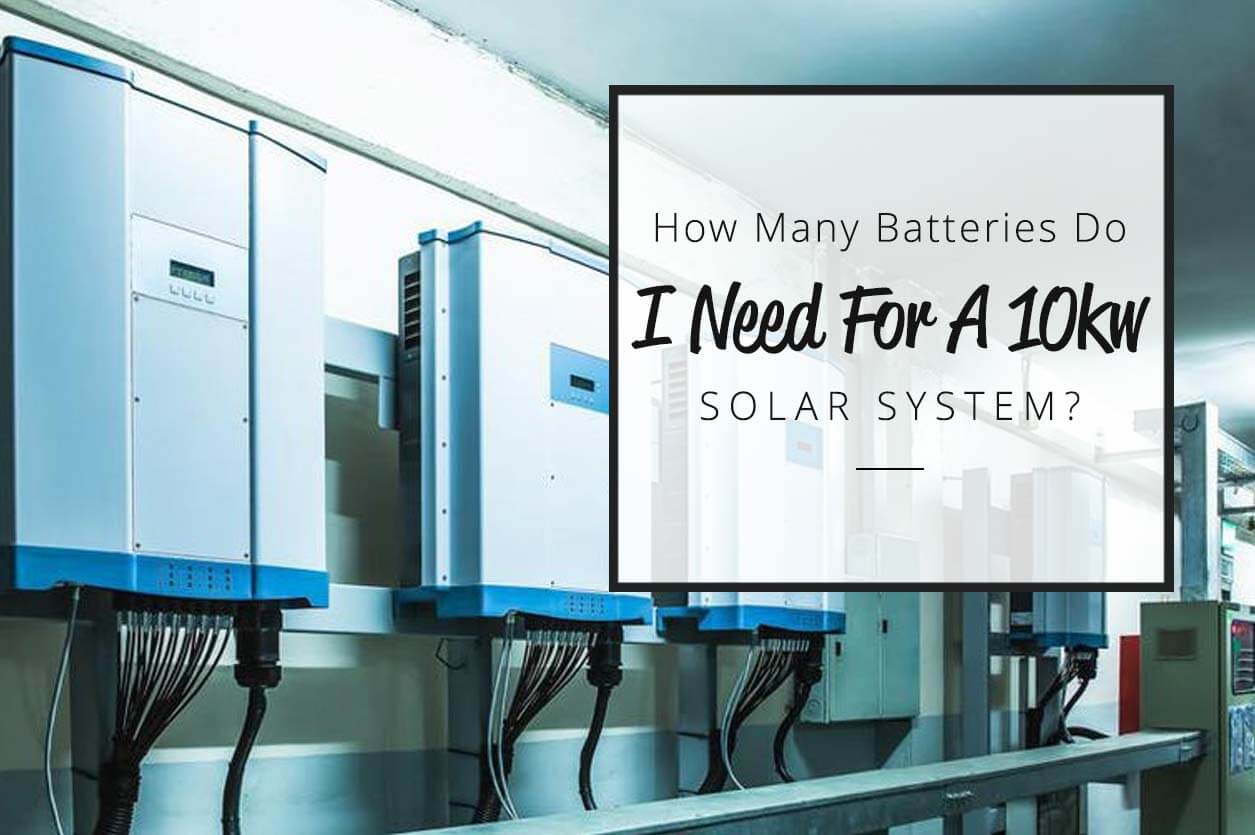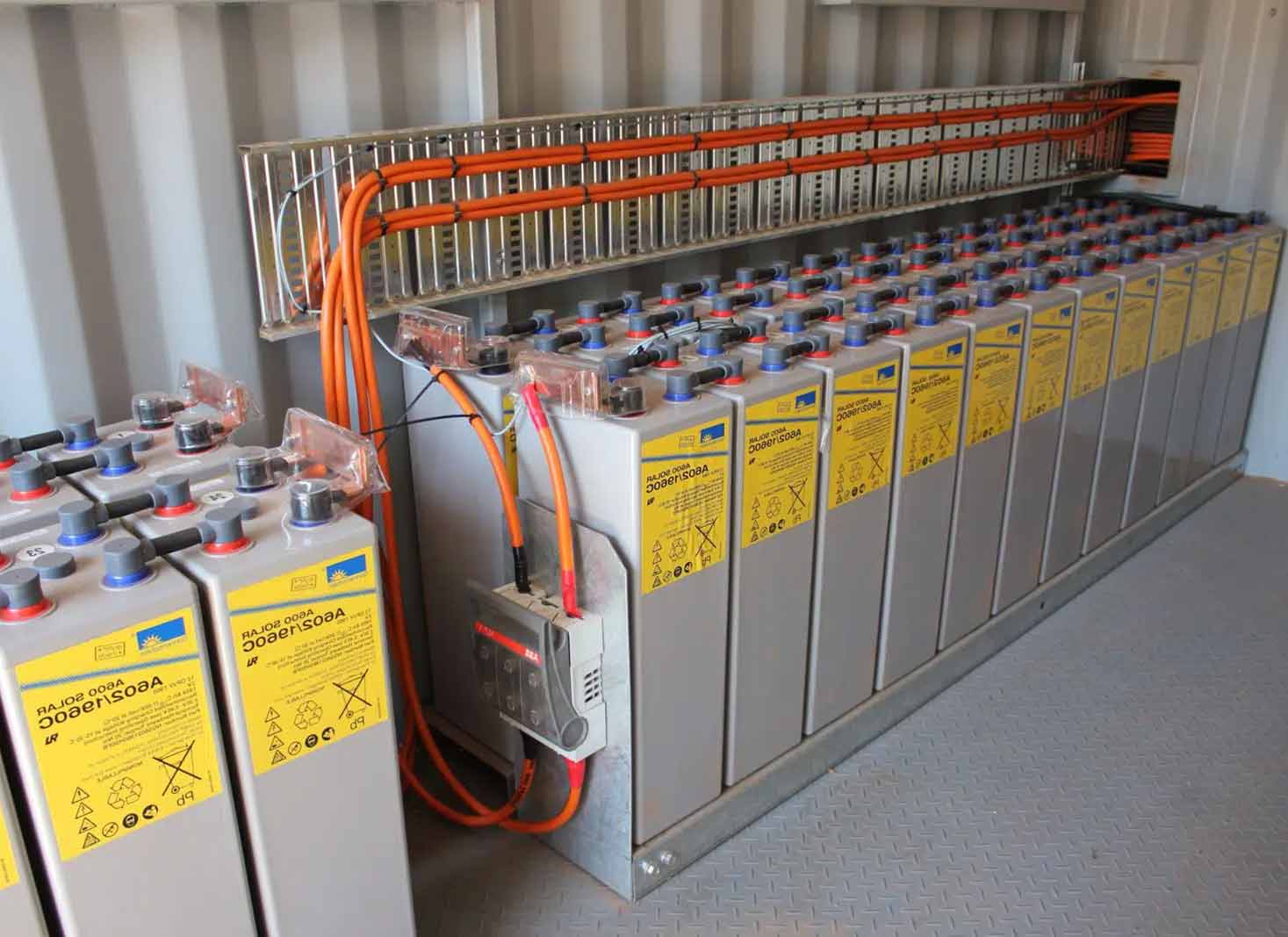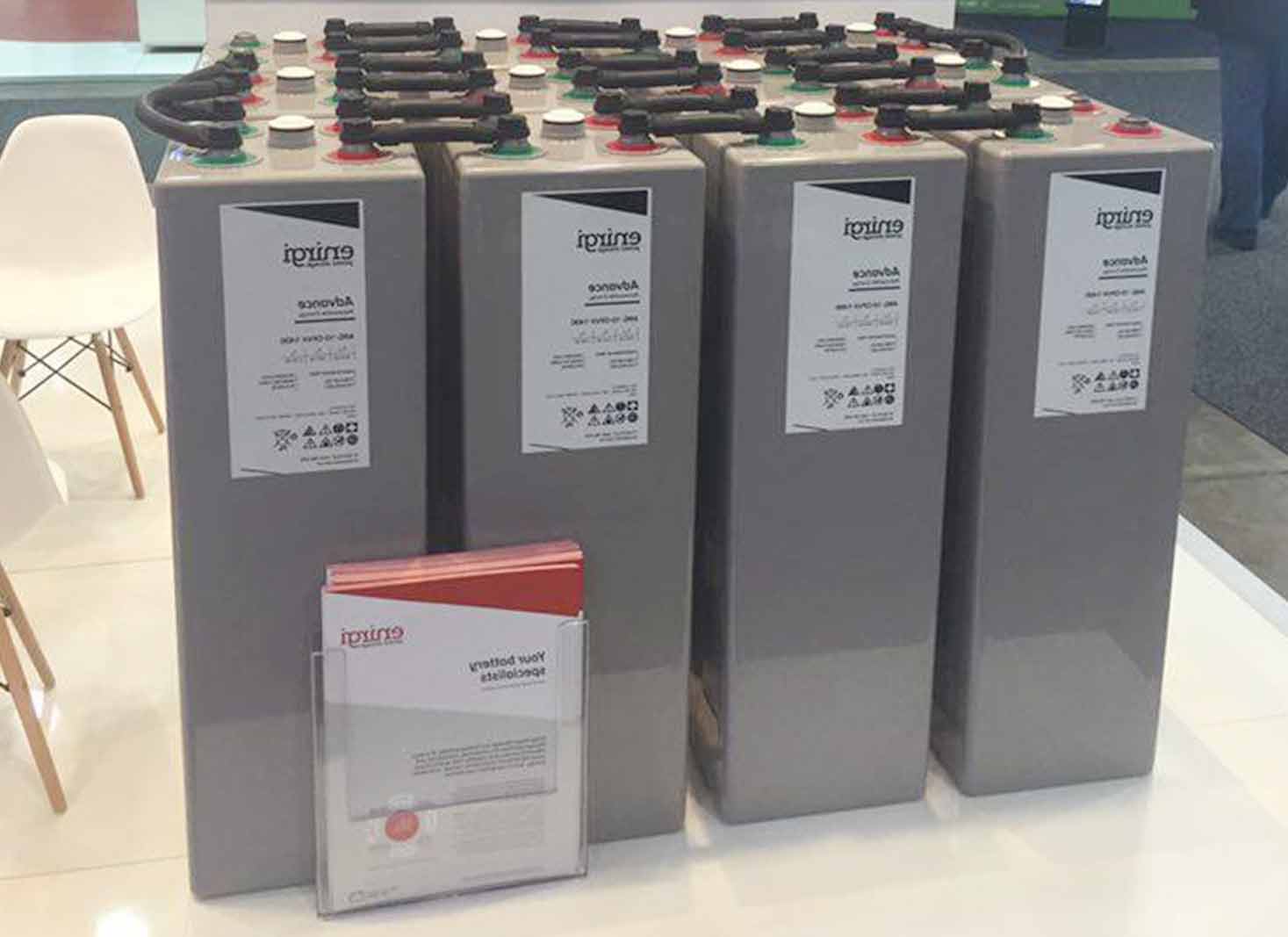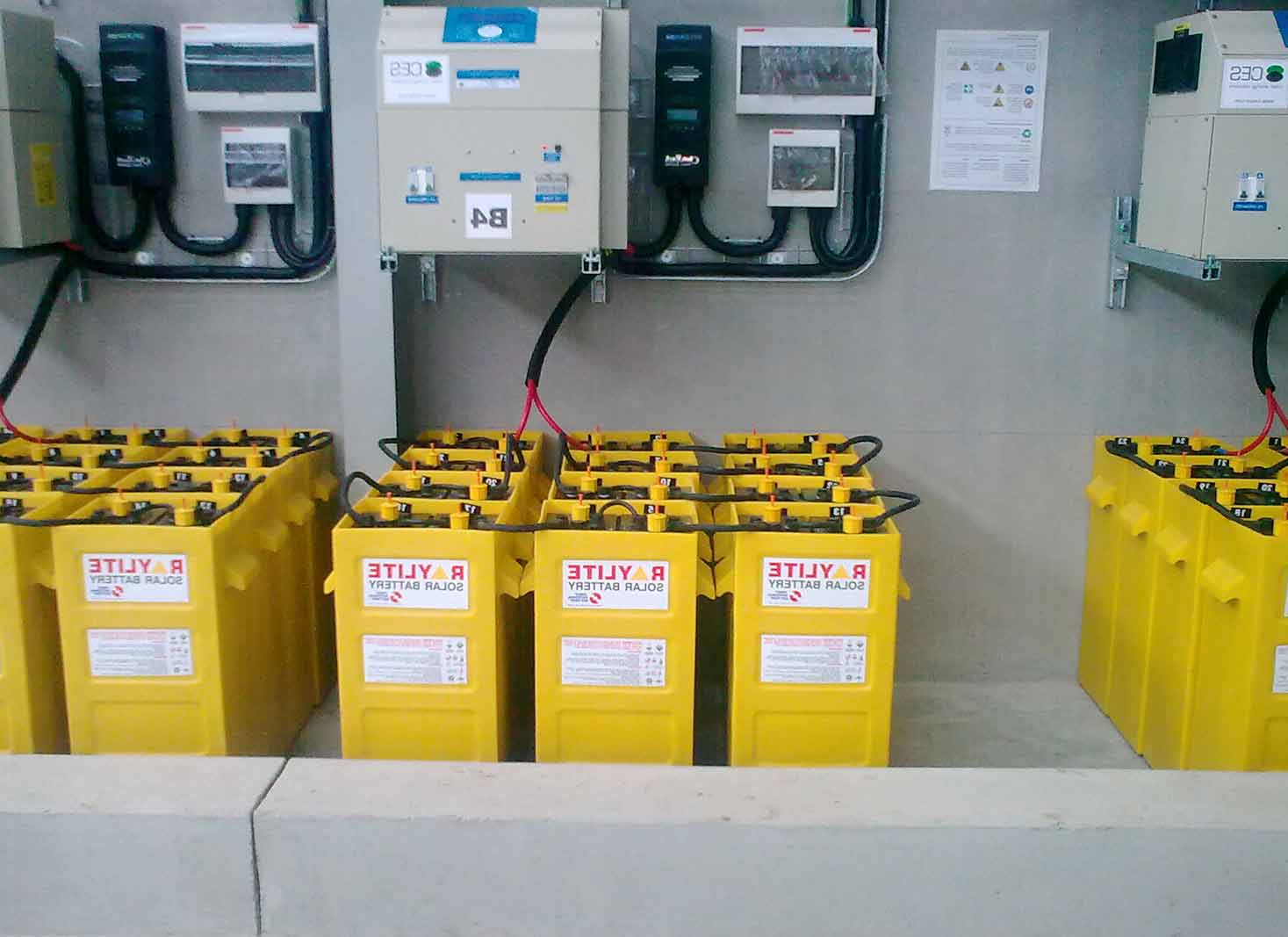Home Solar Battery Storage How Many Batteries Do I Need for a 10kW Solar System?
How Many Batteries Do I Need for a 10kW Solar System?
Have you installed a 10kW solar system at your home? Want to know the ideal battery capacity for it? Solar power is surging in popularity, prompting loads of Australian households to equip their homes with 10 kW solar systems, and often, this also involves incorporating battery storage.
For a 10kW solar system, you will need 2-3 fourteen-kilowatt solar batteries. A 10 kW solar system produces an average of 40 kilowatt-hours daily, and you need enough battery capacity to store this energy. The actual number of solar batteries required for a 10 kW solar system depends on the wattage of the battery.
There are different battery types available, such as Lead Acid batteries or lithium batteries. There are also various battery capacities, including 10 kW, 14 kW, 28 kW, etc.

Table of Contents
ToggleHow much energy can I back up?
A 10-kilowatt solar system is enough to power the average 5-bedroom house along with all appliances within the house. The 10kW solar system produces an estimated 40 kilowatt hours (40Kwh) daily with average sunlight exposure.
This energy has to be stored for use when the sun is down. A battery with a high enough capacity to store 40 kWh is the best option for a 10 kW solar system. For example, 3 10 kW solar batteries should be able to store 30 kWh of energy that can be used at a later time. Two 28 kW solar batteries will be able to store 56 kWh of energy.
This goes to show that the exact amount of batteries required by a 10kW solar system depends on the capacity of the battery. If you are looking to go off the grid, you will need more batteries than average. This is because you will need to store enough energy for times without sunlight.
How do I calculate how much battery I need for my solar system?

Knowing how many batteries to purchase for a solar system is very important. The right amount of batteries allows a household to store the maximum amount of energy thereby getting more use out of the solar system.
Determining how many batteries you’ll need for a solar system can be done using the following steps.
1. Determine the total energy consumed by the household
Knowing the amount of energy consumed by the household is very crucial in determining the number and capacity of solar batteries required. The higher the energy consumption, the more batteries are needed.
To determine the total energy consumption of households, add the wattage of each appliance multiplied by the average number of hours used daily. Or you can simply check an old electricity bill as it is usually stated there.
2. Then calculate night usage
After determining the average daily energy consumed by the household, we can then calculate to know the correct battery size required. If the household consumes 35 kWh daily on average, a 10kW solar system will be perfect for them as it produces an average of 40 kWh daily which is enough to cover their energy demands.
Solar batteries need to store at least 70% of the total energy consumed daily to provide electricity when the sun is down. That is 35kW X 70% = 24.5kW. The solar battery for this scenario needs to store 24.5 kW of energy.
A 28kW battery, or 2 X 14kW batteries would be suitable options for this scenario. The more batteries the larger buffer you will have if there is a blackout that lasts more than 24 hours.
Types of solar batteries for a solar system
There are different types of solar batteries available for domestic use. We have four types namely; lithium batteries, Lead Acid batteries, Nickel Cadmium batteries, and flow batteries. However, lithium and Lead Acid are the most widely used solar batteries.
1. Lead Acid solar battery

Lead Acid batteries are the first and most popular solar batteries in the market. They are made with tried and true technology that has been around since the 1800s. Although Lead Acid solar batteries are the cheapest and most cost-effective option, they are also known to be very reliable.
Lead Acid batteries can also be easily disposed of and recycled. However, they require frequent charging and have low lifespans. The reliability of the Lead Acid batteries is great for off-grid solar systems, emergency backup storage etc.
2. Lithium battery
Lithium solar batteries are the new technology batteries. The use of lithium batteries is rising due to all the advantages however they are very expensive and improper installation can lead to a fire outbreak.
Lithium batteries require little to no regular maintenance throughout their lifespan and have a high energy storage density and a longer lifespan than Lead Acid batteries. They are best for residential solar installations as they hold more power in limited space allowing more of the energy stored within the battery to be used.
3. Nickel Cadmium battery
Nickel Cadmium batteries may not be as widely used as Lithium and Lead Acid batteries, but they are well-known for being durable. They can operate at extreme temperatures and don’t require complex battery management systems. They are also basically maintenance-free.
Nickel Cadmium batteries are extremely toxic and not recommended for domestic use. Cadmium used to make this battery is banned in some countries due to its toxicity. However, because of their durability, they are used in large-scale applications like utility solar energy storage.
4. Flow battery
A flow battery is one of the upcoming solar battery technologies. Flow batteries are larger than their counterparts making them more expensive than the other battery types. The high price and large size have made it hard to adapt them for residential use.
Flow batteries are fire-retardant, low-maintenance and have the longest life span among all batteries at a whopping 30 years. However, they have a relatively low storage capacity compared to other battery types hence the size.
They also have very low charge and discharge rates that demand frequent recharge. Flow batteries are best for large-scale installations as they can accommodate the large sizes of the battery. The size of flow batteries has prevented them from becoming a popular residential option.
How much do solar batteries cost?
Based on our above calculation, you are going to need 24.5kW of storage capacity. Tesla Powerwall2 is a 14kW battery that costs $12,500 AUD, so to make this up, you will need two, so a total of $25,000.
There are some great Australian manufacturers that can do the same job but do cost a little more.
RedFlow batteries are a great example. Their 10kW batteries are $12,600. You will need 2 X 10kW and 1 X 5kW batteries to make up your 24.5kW storage capacity which would cost about $30,000.
How long do solar batteries last?

Solar batteries have an average lifespan of 5 to 15 years. This is dependent on many factors such as the type of battery, care, and maintenance. The type of battery is one of the factors that affect the lifespan of a battery. We have three types of solar batteries namely; lithium batteries, saltwater batteries and Lead Acid batteries.
Lithium Batteries have the longest lifespan followed by Saltwater batteries then Lead Acid batteries. Lithium batteries have a lifespan of 10 to 15 years, Saltwater batteries have a lifespan of 8 to 10 years and Lead Acid batteries have a lifespan of 5 to 7 years.
Taking good care of your battery through regular servicing and maintenance can extend the life span by years. Maintaining your solar battery is very important, especially for Lead Acid batteries. This is done by regularly cleaning the terminals to remove any corrosion, avoiding overcharging, etc. among other maintenance procedures. Proper maintenance of a solar battery is guaranteed to extend its lifespan.
Compare Solar Panel Quotes
Table of Contents
Toggle









